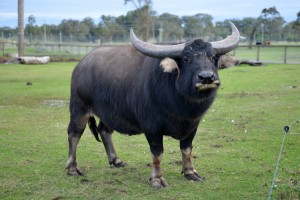Empathy, cooperation, fairness and reciprocity — caring about the well-being of others seem like very human traits. But researchers are coming to recognize that all of these traits are shared by non-human animals.
Morality is the differentiation of intentions, decisions, and actions between those that are “good” (or right) and those that are “bad” (or wrong), and is generally considered to be comprised of two pillars: Reciprocity (fairness) and Empathy (compassion).
For years, Frans de Waal, an esteemed primatologist has observed chimpanzees soothe distressed neighbors, reconcile after a fight, and bonobos share their food. Chimpanzees and elephants are intelligent enough to work together as a team for the common goal of attaining food. Two encaged chimps knew to pull a container towards the cage with a rope for the treats on top. When one lost motivation and focus, the other gently coaxed him to turn back to the task at hand.
In another experiment, two chimpanzees were kept in two separate cages. One was instructed to pick a cube from the bin in front of his cage. Whenever he picked the red one, only he would get a treat. But every time he selected a green one, both he and his neighbor would receive a treat. Even though the picker got a reward no matter what, he’d choose green more often to make the other chimp happy. However if his neighbor pushed too hard by spraying water or making loud noises, the picker would just give up trying to be pro-social. This experiment proves that chimpanzees do care about the welfare of others.
If a child is drowning in a lake, any witnesses are expected to do something to save her life regardless of when and where this happens and the ethnicities of the child and spectators. This is the so-called “universal moral conscience” which suggests basic human similarities. Everyone experiences an internal sense of moral obligation to do the right thing.
In fact some social animals exhibit the same “moral conscience”. I was appalled by a video clip capturing the bravery of a herd of bull. A bullock was pulled into the water by a crocodile and then a few lions came over and battled the crocodile for the prey. The lions were about to enjoy a satisfying meal when a herd of bull charged towards them, chased them away one by one and restored the bullock to safety. It appears that these group animals may have the prerequisites for morality, such as intentional behavior, desires, pleasures and emotions. The will to ensure the survival of the species is likely the driving force towards the formation of morality.
In a ‘fairness’ study designed to test whether animals could recognize unfair/unequal treatment, researchers observed a capuchin angrily threw the piece of cucumber at the lab worker when his next cage neighbor had been given a grape for performing the same task of handing a piece of rock from the cage to the worker. De Waal called it “the Wall Street protest”.
We use each other as social mirrors. For example, when we see others yawn, we yawn as well. Experiments with primates have exposed mirror neurons in the frontal part of the brain. Chimpanzees also yawn when they are shown animated pictures of a yawning chimp on the screen. The discovery of mirror neurons demonstrated that monkeys have mental representations of the actions of others, which are important for understanding the intentions of others. American psychologist Gordon Gallup’s study revealed that chimpanzees appeared to recognize themselves at around 6 years; human infants exhibited self-recognition at around 18 months. An individual must always acquire the capability of self-recognition before acquiring the ability to attribute intentional motives, desires, and goals to others*.
Elephants seem to have a undertanding of mortality, which is truly amazing. Elephants communicate with others in the event of the death of a close relative, according to the ongoing study at the Amboseli National Park, Kenya. The study says that the mammal also have the ability to recognize their long dead relatives through their bones and bury them decently. In order to mourn on their dead one, they are said to congregate at the place where they have found the remaining of their kin. The animals make a strange noise when burying their dead relatives which resembles how human squeal at a loved ones funeral**.
Based on his landmark research, Frans de Waal argues that human morality is not imposed from above but instead comes from within. Moral behavior does not begin and end with religion but is in fact a product of evolution.
Mortan Kringelbach, professor at Aarhus University Denmark, suggests that morality may have developed as a result of the social mirror found in gregarious animals. Each individual is constantly monitored by others. The resulting interplay produces the elements that constitute morality. Morals are far more developed in humans, which is probably among the reasons that some people think that humans are the only moral animals. It might be worth remembering that, as with so much in nature, the question of morality is probably more of degree rather than of kind.
_______________________________________________________________
*The Pleasure Center by Morten L. Kringelbach
**http://www.shvoong.com/exact-sciences/1744138-elephants-bury-dead/#ixzz2Rx5Jieyl
